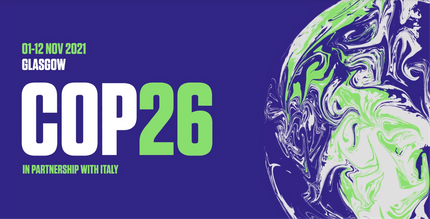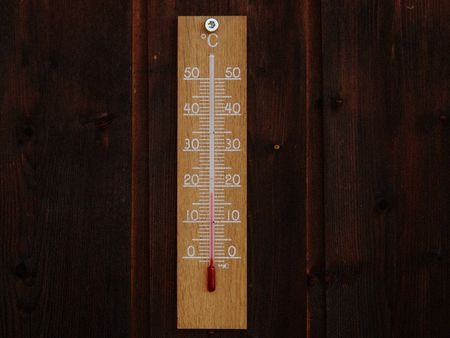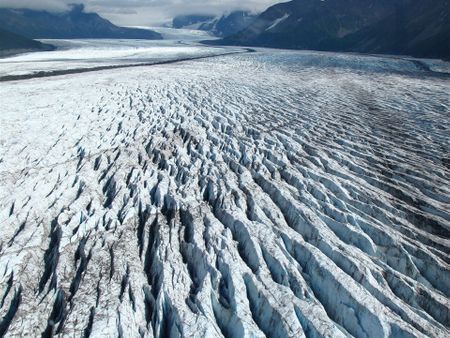In this section Selected Articles by Guest Writers
UN COP26 - the outcome: The Glasgow Climate Pact
After extending the COP26 climate negotiations an extra day, nearly 200 countries meeting in Glasgow, Scotland, adopted an outcome document that, according to the UN Secretary-General, “reflects the interests, the contradictions, and the state of political will in the world today”.
A snapshot of the agreement
The outcome document, known as the Glasgow Climate Pact, calls on 197 countries to report their progress towards more climate ambition next year, at COP27, set to take place in Egypt. The outcome also firms up the global agreement to accelerate action on climate this decade.
However, COP26 President Alok Sharma struggled to hold back tears following the announcement of a last-minute change to the pact, by China and India, softening language circulated in an earlier draft about “the phase-out of unabated coal power and of inefficient subsidies for fossil fuels”. As adopted on Saturday, that language was revised to “phase down” coal use.
Mr. Sharma apologized for “the way the process has unfolded” and added that he understood some delegations would be “deeply disappointed” that the stronger language had not made it into the final agreement.
By other terms of the wide-ranging set of decisions, resolutions and statements that make up the outcome of COP26, governments were,among other things, asked to provide tighter deadlines for updating their plans to reduce emissions.
On the thorny question of financing from developed countries in support of climate action in developing countries, the text emphasizes the need to mobilize climate finance “from all sources to reach the level needed to achieve the goals of the Paris Agreement, including significantly increasing support for developing country Parties, beyond $100 billion per year”.
The ‘least worst’ outcome
Earlier during the conference's final stocktaking plenary, many countries lamented that the package of agreed decisions was not enough. Some called it "disappointing", but overall, said they recognized it was balanced for what could be agreed at this moment in time and given their differences.
Countries like Nigeria, Palau, the Philippines, Chile and Turkey all said that although there were imperfections, they broadly supported the text. “It is (an) incremental step forward but not in line with the progress needed. It will be too late for the Maldives. This deal does not bring hope to our hearts,” said the Maldives’ top negotiator in a bittersweet speech.
US climate envoy John Kerry said the text “is a powerful statement” and assured delegates that his country will engage constructively in a dialogue on "loss and damage" and adaptation, two of issues that proved most difficult for the negotiators to agree upon.
“The text represents the ‘least worst’ outcome,” concluded the top negotiator from New Zealand.
Other key COP26 achievements
Beyond the political negotiations and the Leaders’ Summit, COP26 brought together about 50,000 participants online and in-person to share innovative ideas, solutions, attend cultural events and build partnerships and coalitions.
The conference heard many encouraging announcements. One of the biggest was that leaders from over 120 countries, representing about 90 per cent of the world’s forests, pledged to halt and reverse deforestation by 2030, the date by which the Sustainable Development Goals (SDGs) to curb poverty and secure the planet’s future are supposed to have been achieved.
There was also a methane pledge, led by the United States and the European Union, by which more than 100 countries agreed to cut emissions of this greenhouse gas by 2030. Meanwhile, more than 40 countries – including major coal-users such as Poland, Vietnam and Chile – agreed to shift away from coal, one of the biggest generators CO2 emissions.
The private sector also showed strong engagement with nearly 500 global financial services firms agreeing to align $130 trillion – some 40 per cent of the world’s financial assets – with the goals set out in the Paris Agreement, including limiting global warming to 1.5 degrees Celsius.
Also, in a surprise for many, the United States and China pledged to boost climate cooperation over the next decade. In a joint declaration they said they had agreed to take steps on a range of issues, including methane emissions, transition to clean energy and decarbonization. They also reiterated their commitment to keep the 1.5C goal alive.
Regarding green transport, more than 100 national governments, cities, states and major car companies signed the Glasgow Declaration on Zero-Emission Cars and Vans to end the sale of internal combustion engines by 2035 in leading markets, and by 2040 worldwide.
At least 13 nations also committed to end the sale of fossil fuel powered heavy duty vehicles by 2040. Many ‘smaller’ but equally inspiring commitments were made over the past two weeks, including one by 11 countries which created the Beyond Oil and Gas Alliance (BOGA).
Ireland, France, Denmark, and Costa Rica among others, as well as some subnational governments, launched this first-of-its kind alliance to set an end date for national oil and gas exploration and extraction. Source: United Nations
Half a degree, half a chance
By Natalie Samarasinghe, Executive Director, United Nations Association -UK.
The latest IPCC report outlined the devastating impact of a 2ºC temperature rise – the Paris target that we’re set to miss spectacularly – against the somewhat less bad scenario of 1.5ºC. We are now in damage limitation mode, and the window for doing even that is closing fast.
2018 may well be remembered as the year we missed the opportunity to prevent the worst impacts of climate change. In October, the Intergovernmental Panel on Climate Change (IPCC) released a special report on the differences between a world that is 1.5ºC warmer than preindustrial levels, and one where temperatures are 2ºC higher. It is a grim read. That crucial half a degree would add 10cm to global sea level rise, putting 10 million more people at risk. It would wipe out virtually all coral reefs. Three times as many insects, and twice as many plants and mammals, would lose over half their living space. Nearly 120 million more people would experience water scarcity. Two times as many people would be exposed to extreme heat. The average drought would last twice as long. Even the dense and cautious language (projections are given a confidence level and a likelihood rating, where “likely” is classified as having a 66 per cent to 100 per cent chance of occurring) is unable to soften the fact that we are now in damage limitation mode. In 2015, global warming reached 1ºC and our options going forward all entail significant upheaval and loss of life.
The 1.5ºC scenario may be better, but it does not avoid sea-level rise, habitat loss and longer droughts. It would still see coral reefs decline by 70-90 per cent and millions of people struggling to cope with multiple challenges such as crop failures and extreme weather. Current projections put us on course to reach this point in the next 10 years or so. It is this context that makes the report so distressing. Given that the 1.5ºC scenario, included in the Paris Agreement as an “ambition” at the insistence of small island states and a few others, is so disruptive, the 2ºC target that world leaders agreed seems woefully inadequate. More worryingly, we are nowhere near meeting even that goal. If all commitments made under Paris were realised, global temperatures would rise by 2.6-3.2ºC. Our present trajectory puts us on track for a 3.1-3.7ºC rise – and we know what a deadly difference half a degree can make.
Turning point?
But there is still a chance that 2018 will come to be seen as the year the world changed course. The IPCC’s report sets out pathways for how we can limit global warming to 1.5ºC with no or minimal overshoot of this target. It features different combinations of lowering energy demand and consumption and moving to low-carbon goods and services, as well as strategies for removing carbon dioxide – recognising that whatever we do now, we will need to take CO2 out of the air in addition to reducing emissions. One of the best-case scenarios is based on us achieving rapid decarbonisation, with afforestation being used to balance remaining emissions by removing CO2 . A middle-of-the-road scenario projects societal and technological developments following historical patterns, which would require more intensive changes in the way energy and products are produced, to compensate for a less steep reduction in demand. The least-promising scenario, which would see a higher overshoot of the temperature target, sees us continuing energy-intensive growth, and therefore being heavily reliant on carbon removal technologies – most of which are still untested, especially at scale. The message is clear: somehow, we need to halve net emissions in the next 15 years or so and virtually eliminate them by 2050. In parallel, we need to improve low carbon technologies and carbon removal strategies dramatically. As IPCC member Jim Skea notes: “Limiting warming to 1.5ºC is possible within the laws of chemistry and physics but doing so would require unprecedented changes.” This publication features strategies and case studies for how we can meet this challenge through rapid, far-reaching transformations in areas from food to fuel, from cities to coastal communities. It is hardly an easy to-do list. Indeed, our contributors make clear that our approach cannot be linear and compartmentalised: number one, save humanity; number two, deal with human rights, conflict, etc.
Our success on the first goal is predicated on progress towards the second. We have to stop using fossil fuels, for example, but we can’t get there without ensuring that those whose livelihoods depend on it, and those who have no other option, are able to survive. That does not mean we have to wait for the perfect solutions to move forward. In 2015, UNA-UK cast aside its reservations about the Paris Agreement on the basis that it represented a much-needed, long-overdue starting point from which to ratchet up ambition. But we cannot afford to put off the difficult decisions involved with fundamentally changing our societies. For this reason, we have chosen to put special emphasis on finance in this publication, and give top billing to UN Secretary-General António Guterres, who succinctly sets out the fundamental economic shifts we need to start instituting now, and to László Szombatfalvy, the billionaire investor and philanthropist, whose risk-based framing of climate change will resonate both with business and the public at large.
Every day counts
Given the enormous risks involved, it is astounding that climate change does not dominate the headlines, or play a central role in elections and investment decisions. Astounding too is the prevailing wisdom that we must not be too gloomy in our messaging for fear of putting people off. Of course, we should highlight the practical actions and policy changes that people can take and support. But it is difficult to think of another issue where we so easily underplay the grave dangers we face. If someone tells you that your house is burning, does that make you less likely to try to put out the fire? In any case, we are now entering a period where those in the West, and elites in the South, are beginning to see what the poor and vulnerable have known for decades – that climate change is here. The past months have seen a heatwave contribute to an estimated 250 deaths in just one night in the UK. The US has been repeatedly battered by hurricanes, and forest fires in countries such as Greece have hit the tourism industry, affecting rich and poor alike. We have also seen an increase in warnings about the impacts of climate change on beer, for instance, which appear to have reached an audience far beyond the usual suspects. Whatever the reasons, UNA-UK hopes this will be the year we all finally woke up to climate change. Every day matters now. We need to act fast.
The importance of the ocean and cryosphere for people
All people on Earth depend directly or indirectly on the ocean and cryosphere. The global ocean covers 71% of the Earth surface and contains about 97% of the Earth’s water. The cryosphere refers to frozen components of the Earth system 1. Around 10% of Earth’s land area is covered by glaciers or ice sheets. The ocean and cryosphere support unique habitats, and are interconnected with other components of the climate system through global exchange of water, energy and carbon. The projected responses of the ocean and cryosphere to past and current human-induced greenhouse gas emissions and ongoing global warming include climate feedbacks, changes over decades to millennia that cannot be avoided, thresholds of abrupt change, and irreversibility.
Human communities in close connection with coastal environments, small islands (including Small Island Developing States, SIDS), polar areas and high mountains7 are particularly exposed to ocean and cryosphere change, such as sea level rise, extreme sea level and shrinking cryosphere. Other communities further from the coast are also exposed to changes in the ocean, such as through extreme weather events. Today, around 4 million people live permanently in the Arctic region, of whom 10% are Indigenous. The low-lying coastal zone8 is currently home to around 680 million people (nearly 10% of the 2010 global population), projected to reach more than one billion by 2050. SIDS are home to 65 million people. Around 670 million people (nearly 10% of the 2010 global population), including Indigenous peoples, live in high mountain regions in all continents except Antarctica. In high mountain regions, population is projected to reach between 740 and 840 million by 2050 (about 8.4–8.7% of the projected global population). In addition to their role within the climate system, such as the uptake and redistribution of natural and anthropogenic carbon dioxide (CO2) and heat, as well as ecosystem support, services provided to people by the ocean and/or cryosphere include food and water supply, renewable energy, and benefits for health and well-being, cultural values, tourism, trade, and transport. The state of the ocean and cryosphere interacts with each aspect of sustainability reflected in the United Nations Sustainable Development Goals (SDGs). IPCC, 2019: Summary for Policymakers.
In: IPCC Special Report on the Ocean and Cryosphere in a Changing Climate [H.-O. Pörtner, D.C. Roberts, V. Masson-Delmotte, P. Zhai, M. Tignor, E. Poloczanska, K. Mintenbeck, A. Alegría, M. Nicolai, A. Okem, J. Petzold, B. Rama, N.M. Weyer (eds.)]. In press.



